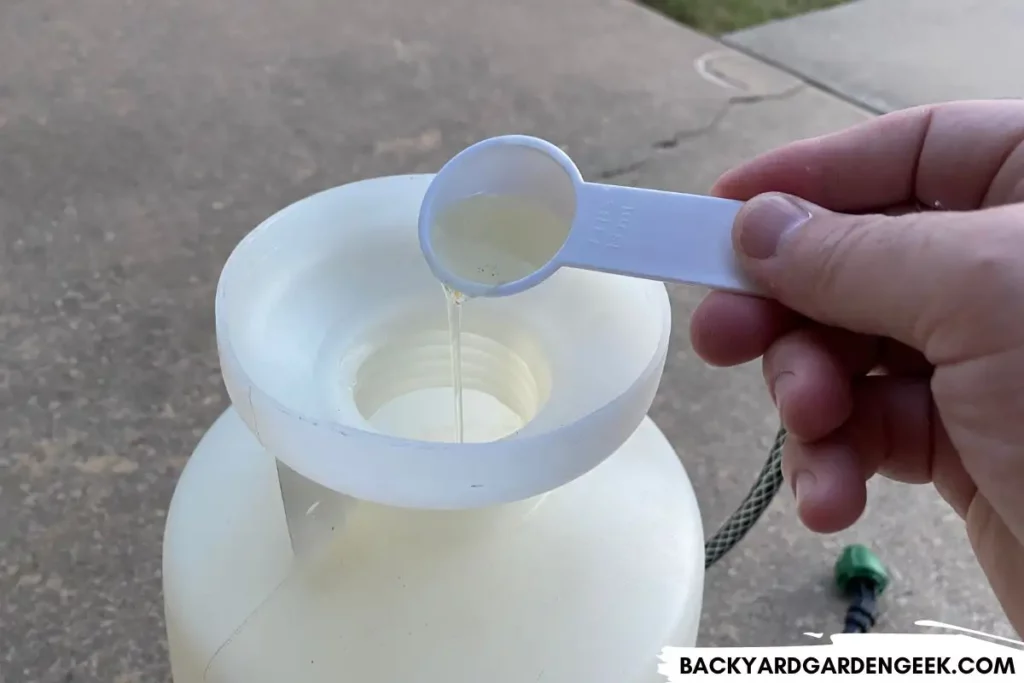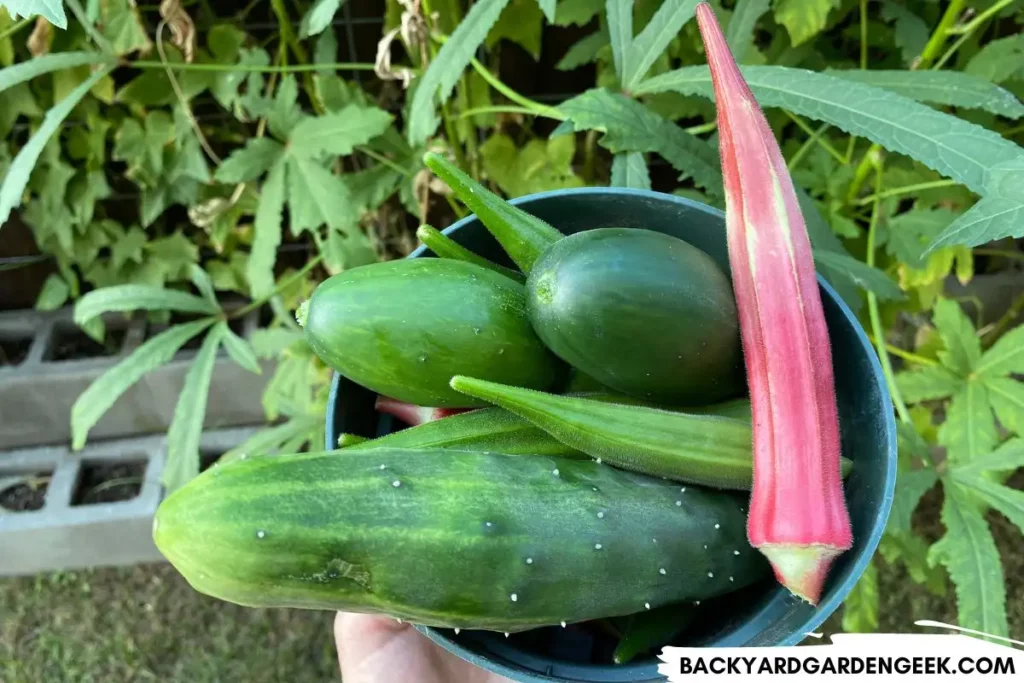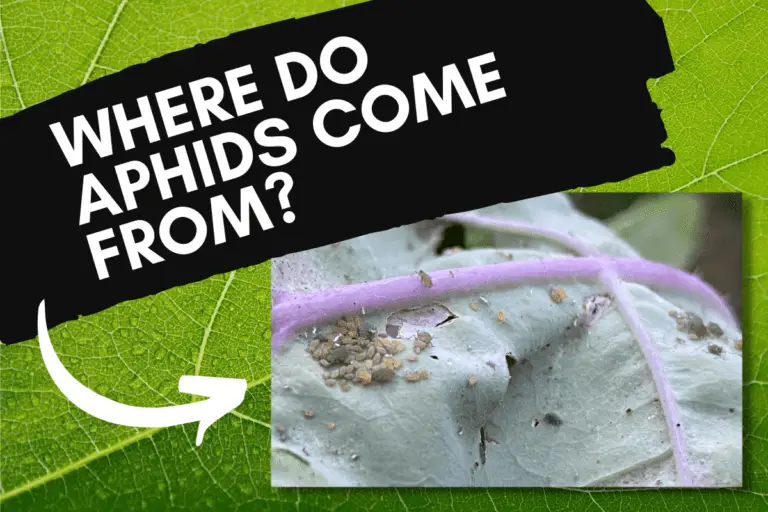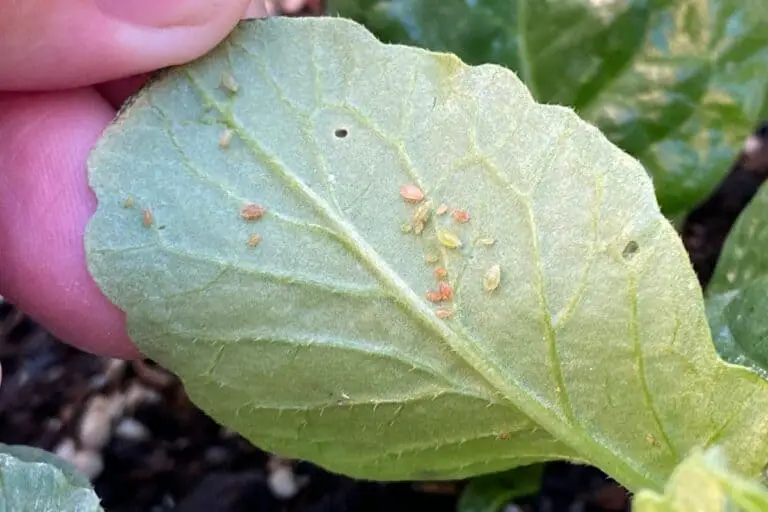10 Simple Ways to Get Rid of Ants on Your Cucumber Plants
If you’re a gardener, you know how frustrating it can be to see your cucumber plants covered in ants. Not only are ants unsightly, but they can also be a sign of other plant problems.
So what should you do? What are the best ways to get rid of ants on your cucumber plants?
To get rid of ants on cucumber plants, use soapy water, neem oil, orange oil, boric acid, vinegar, diatomaceous earth, cinnamon powder, peppermint oils, or ant baits. Ants might appear on plants for various reasons, so regular monitoring is key to prevent damage and ensure healthy cucumber plants.
In this article, I’ll begin by covering the following:
- why ants are attracted to cucumber plants
- what benefits they receive from them
- what common causes lead to ant infestations
Most importantly, I’ll provide you with an overview of various pest management strategies plus a comprehensive guide to getting rid of ants on your cucumber plants.
Why Are Ants on My Cucumbers?

There are several reasons why ants might be attracted to your cucumber plants.
The most common cause is the presence of aphids or other insects that produce honeydew droplets, which are a sugary byproduct that aphids leave behind while feeding on plants.
Ants are also attracted to nectar, which is produced by many flowers, including some cucumber flowers.
Additionally, ants can be attracted to the moisture produced by cucumber plants, especially if the weather is very warm, the soil is very dry, or the plants are very saturated.A
Although there are different reasons why ants might have shown up on your cucumber plants, the primary culprit is usually aphids.
As they feed on plant sap, aphids produce honeydew. In order to get as much honeydew as possible, ants will protect the aphids on your cucumber plants and receive the honeydew in return.
Ants will herd aphids from one plant to another in search of new sources of honeydew. They’ve even been known to kill off one species of aphid so that another species (which produces better-tasting honeydew) can thrive in its place.
They’ll also protect aphids from predators and parasites, which helps the aphids to survive so that they can produce more honeydew.
It’s essential to figure out why exactly you’ve got ants on your cucumber plants so that you can effectively remove them.
If you don’t address the underlying causes of the ant infestation, it’s unlikely that you’ll be able to get rid of the ants for very long.
How Do I Keep Ants Off My Cucumber Plants?

If you notice ants on your cucumber plants, you need to inspect your plants closely for various reasons.
First, in the off chance that you’ve got leafcutter ants on your property, these little menaces can damage your plants by destroying their foliage. This not only affects the overall appearance of the plants, but also reduces their yield and quality.
Second, other ant species, especially red fire ants, can interfere with proper pollination and cucumber development by deterring bees, butterflies, and other beneficial insects from visiting the plants.
Weirdly enough, ants can even have a positive impact on plants in certain situations.
For example, some species help to protect the plants from pests by attacking and killing the latter. This is especially true if ants have noticed extrafloral nectaries, which produce a sweet nectar that ants love.
However, the negative impact of ants on cucumber plants can often outweigh the positive benefits, which is why it’s important to determine what’s drawing them to your plants before you start working to kill them off.
There are various methods for keeping ants off cucumber plants, including the use of natural products, DIY repellents, and bait stations. The method you choose will depend on the severity of the ant problem and your personal preferences when it comes to pest management.
In any case, you’ll want to monitor your plants regularly and take action promptly if you ever see ants crawling all around them.
This will help to prevent further damage to the plants and ensure a healthy and productive cucumber crop.
To get started, here’s an overview of the methods I’ll be describing in more detail below:
| Soapy Water Spray | Soapy water spray disrupts the ant’s ability to maintain their exoskeleton and causes dehydration. |
| Neem Oil | Neem oil sprays have insecticidal properties that interfere with the ant’s ability to feed and reproduce, eventually leading to death. |
| Orange Oil | Orange oil sprays contain d-limonene, which is toxic to ants and disrupts their nervous system. |
| Boric Acid | Boric acid, when ingested, acts as a stomach poison and disrupts the ant’s digestive system. |
| Vinegar Spray | Vinegar disrupts the ant’s sense of smell, making it difficult for them to locate food and navigate. |
| Diatomaceous Earth (DE) | Diatomaceous earth can get rid of ants because the sharp, abrasive particles tear at the ants’ exoskeletons and dehydrate them. |
| Cinnamon Oil or Powder | Cinnamon powder can get rid of ants because the strong odor disrupts their ability to communicate and find food. |
| Peppermint Essential Oil | Peppermint essential oil can get rid of ants because the strong scent masks their pheromones, making it difficult for them to forage and find food. |
| Commercial Ant Baits | Commercial ant baits can get rid of ants because they contain a slow-acting poison that the ants carry back to their colony, eventually killing the queen and disrupting the colony’s ability to reproduce. |
| Boiling Water | Boiling water can get rid of ants because it instantly kills them and destroys their nests and food sources. |
Now that I’ve given you an overview of the subject, let’s take a look at each of these methods so that you can figure out which one will work best for you.
1. Soapy Water Spray
Soapy water spray is a simple and safe method for getting rid of ants on cucumber plants. This is my go-to solution for all kinds of pests: ants, aphids, spider mites, and whiteflies, to name a few.
Here’s the recipe I use for pesky infestations. You’ll notice I go a little heavy on the soap since I want to ensure its effectiveness.
- Use a 2-gallon sprayer and fill it with water (7.5 L). You should definitely opt for a 2-gallon sprayer when mixing soapy water sprays because, unlike other sprays, you can store any leftover soapy water spray days or weeks on end.
- After you’ve added the water, be sure to add 4-5 tablespoons of castile liquid soap (15-30 ml). I go with Dr. Bronner’s Peppermint Castile Soap because ants aren’t fans of peppermint in general, but you can use other soaps as well.
- Shake everything well, then spray your plants thoroughly. It’s best to wait until the late afternoon to do so. You don’t want to spray pollinators or burn your plants by spraying during the heat of the afternoon.

If I suspect that aphids are lurking among my plants, I spray the plants with soapy water once a day for 4-5 days in a row. That way, I can guarantee that I’ve knocked out the aphid problem or at least made it very difficult for them to maintain their infestation.
2. Neem Oil Spray
Neem oil is an effective ant repellent that’s safe for use on cucumber plants. The oil is derived from neem trees (Azadirachta indica) and contains the chemical azadirachtin, which is toxic to any insects that happen to devour it.
With the exception of leafcutter ants, most ants species aren’t going to devour your vegetation, but they’ll feed aphid honeydew droplets and can thus ingest neem oil that way or carry it back with them to their nest.
Here’s how I make my neem oil spray:
- Use a 1/2 gallon water sprayer (1.9 liters) or maybe a 1-gallon sprayer for larger gardens. Don’t use a 2-gallon sprayer since there’s no way you’ll use up all that neem oil in one session, and you can’t store neem oil once you’ve mixed it with water.
- Add 1 tablespoon of neem oil (15 ml) per 1/2 gallon of water. My favorite brands are Verdana and Neem Bliss.
- Add 2 teaspoons (10 ml) of castile liquid soap per 1/2 gallon of water, which will act as an emulsifier. As I noted above, I really like Dr. Bronner’s Peppermint Castile Soap.
Please know that there are many ways you can go wrong with neem oil. You can spray too much or not enough, you can act too soon or wait too long, and you can overspray and underspray.
You can even do everything right yet still damage your plants if you don’t spray at the best time of day.

In other words, unlike soapy water, you’ll want to read up about neem oil before you go spraying your plants with it.
I suggest taking a look at these 6 articles in particular since I cover all kinds of important topics in them.
It might take you 20 minutes to read all of the, but by then, you’ll know pretty much everything you need to know to get started using neem oil successfully in your garden.
- 9 Reasons Your Neem Oil Might Not Be Working
- Can You Use Too Much Neem Oil on Plants?
- How Can I Make Neem Oil More Effective? My 10-Step Process
- How Long Does It Take for Neem Oil to Kill Bugs?
- Neem Oil Plant Burn: Why It Happens + How to Avoid It
- Why Do Insects Hate Neem Oil? 12 Secrets to Its Success
3. Orange Oil Spray
I’m a relative newbie when it comes to orange oil sprays, but I’ve become a huge fan recently.
Much like soapy water, orange oil is a natural repellent that’s derived from orange peels. It’s got a strong citrus scent that ants dislike, making it an effective deterrent.
Here’s what you need to do to make your own orange oil spray:
- Fill up a 1-gallon sprayer with water (7.5 L). Always add the water first to avoid soapy messes later!
- Add 2 ounces of orange oil to the sprayer (59 ml). I like the Green Gobbler brand since it does exactly what I need it to do.
- Add 2 teaspoons of your favorite natural liquid soap (10 ml), then shake everything thoroughly.
- Spray anywhere where aphids, ants, or other pests are visible. Please be sure to do so later in the day, preferably as the sun is setting, to avoid harming your plants.
4. Boric Acid Bait
Boric acid is a popular method for getting rid of ants because it’s effective and long-lasting. It acts as a stomach poison, killing ants when they ingest it.
Instructions:
- Mix boric acid with honey or peanut butter to create little bait balls that ants will seek out due to their sweetness.
- Place those bait balls near ant trails or in areas where you’ve seen ant activity so as to draw them to the bait as quickly as possible.
It’s very important to keep boric acid away from kids and pets since it’ll poison them if they were to eat the bait traps. I recommend avoiding boric acid altogether if you’ve got kids running around the property or cats and dogs that have access to your garden area.
5. Vinegar Spray
Vinegar is another natural ant repellent that can be used to get rid of ants on cucumber plants since its strong scent will mask the pheromone trails that ants use to get to and from their food sources and nests.
Here’s a quick and easy recipe for an effective vinegar spray:
- Mix equal parts white vinegar and water in your preferred garden sprayer.
- You can add 5-10 drops of peppermint essential oil for an added punch, but you don’t have to do so.
- Spray the solution directly on any ants you see climbing among your plants or any nests located at the base of the plants.
- Reapply every day as necessary, usually toward the late afternoon or early evening.
6. Diatomaceous Earth
Diatomaceous earth (DE) is a naturally occurring substance that’s made from finely ground rock. It feels powdery to the touch, but at the microscopic level, it’s got very sharp edges that’ll cut through or slice any insect that comes into contact with it.
But don’t worry. It won’t cut you or your furry friends. Just don’t get it in your eyes, nose, or mouth because it’ll cause irritations.
Here’s how I use DE to fight ants in my garden:
- I purchase food-grade diatomaceous earth. You need to purchase the food-grade kind because other forms of DE might have unwanted chemicals in them.
- You can sprinkle the diatomaceous earth around the base of your cucumber plants, which will keep ants from accessing the vines. You can also sprinkle DE directly atop ant nests or use a duster to lightly dust your ant-infested plants with DE.
Make sure to keep the diatomaceous earth out of reach of children and pets. You also need to be careful when dusting with DE because it’ll harm all insects, the good and bad alike.

I’ve written quite a bit about ants, so you might be interested in these related articles:
- 7 Easy Ways to Get Rid of Ants on Your Okra Plants
- Ants in Your Carrots? Here Are 10 Ways to Get Rid of Them
- Do Ants Eat or Kill Aphids? 6 Environmental Factors
- Do Aphids Attract Ants?
- Preventing Ants with Essential Oils + Keeping Dogs Safe
7. Cinnamon Oil and Powder
Much like orange oil, cinnamon is a natural ant repellent that’s good at keeping ants at bay, albeit not quite as effectively as orange oil or DE because it won’t kill off ants. It’ll just set up a temporary boundary between where the ants are and where they want to be.
You can use cinnamon oil in your garden by mixing 15-20 drops with 2 cups of water, but I don’t generally recommend that. It’s expensive, and you’re far better off mixing an orange oil spray or a soapy water spray.
In its powder form, cinnamon is more effective since its strong scent is something that ants don’t like very much and wish to stay away from.
Unfortunately, cinnamon powder is a very temporary stopgap measure since any bit of rain will render it mostly useless and strong winds can often mess up your plans as well.
Like I’ve already said, cinnamon isn’t my go-to pest management strategy when it comes to ants, but if you’d like to give it a try, follow these steps:
- Find the base of your plants, then sprinkle cinnamon around them.
- Locate any nearby nests and sprinkle a cinnamon barrier between them and your plants.
You’ll have to reapply your cinnamon barrier regularly since it won’t actually kill the ants, but it’ll work while it’s active.
Again, though, you’re better off figuring out the source of the ants–it is aphids? dry conditions? a nearby nest?–then simply wasting cinnamon wherever you happen to see ant trails.

8. Peppermint Essential Oil
Peppermint essential oil is a natural ant repellent that you can use both indoors and outdoors, but it’s not safe for dogs and can be harmful to cats as well, so you’ll need to think twice about using it if you’ve got furry friends that like to run around outside.
But if you’d like to give it a try, here’s how it works:
- Fill a 16-ounce spray bottle with water (.5 L).
- Add 5-10 drops of peppermint essential oil and shake the bottle to mix the oil and water.
- Spray the solution directly on the ants and their trails.
- Redo the application once a week or as needed until the ant problem is resolved.
If you’d like to experiment with essential oil sprays but have dogs and cats, I recommend cedarwood and lavender oils since they’re pet-friendly alternatives to peppermint essential oil.
9. Commercial Ant Baits
Commercial ant baits contain a mixture of food and poison that attracts ants and kills them.
This is why, if you’ve ever purchased a package of Terro liquid ant bait traps, you’ll see a flurry of ants a day or two after you place them, then no ants after that.
The ants are drawn to the trap, thereby congregating around it in search of food. They’ll then take the bait back to their nest, distribute it, and die off, which is why they’ll disappear after several days.
To use commercial ant baits, do this:
- Purchase a product like Terro from a local home improvement store.
- Set up the bait stations according to the instructions on the package, placing the stations near ant trails or nests so that the ants pick up the scent.
- Leave the bait stations for up to a week and repeat the application as needed until the ant problem is resolved.
If you’re using bait stations, please be careful if you’ve got young children or curious pets around. You definitely don’t want them pouring out the liquid bait or ingesting it since that could be toxic.
Never put the Terro liquid bait traps in your garden.
You can use the Terro outdoor bait traps outside, but I recommend placing them at least 3-4 feet away from any vegetable garden areas and at least 10 feet away from fruit trees.
10. Boiling water
In a pinch, boiling water can be used to kill ants and their nests as long as those ants and nests are not in or around your garden plants.
It’s not a very precise solution, but it’ll work if you don’t have the materials on hand to take care of the situation properly.
This is typically best for random ant mounds that you’ve found on your lawn, not for ants you see in your garden, because the boiling water will damage your plant’s roots if you pour it anywhere near them.
Here’s what you do if you want to use boiling water on ant mounds:
- Boil a pot of water on the stove. Make sure the pot is larger enough to hold a substantial amount of water yet small enough to carry easily once you’re done.
- Turn off your burner, put on some glove, have someone open the door for you, then carefully carry the pot of water outside.
- Pour the boiling water directly on the ant nest but not all at once. Let the first part soak in, then repeat. Doing this will prevent unnecessary runoff to other parts of your lawn.
- Repeat the application once every day or two or as needed until the ant problem is resolved.
Ant infestations on cucumber plants can be frustrating, but if you understand why ants are in your garden, as well as the potential benefits of having ants around, you can determine whether you need to get rid of them or leave them alone.

The methods discussed in this article–from soapy water spray, neem oil, orange oil, and boric acid to vinegar, DE, cinnamon, peppermint, ant baits, and boiling water–provide a range of options for getting rid of ants on your cucumber plants (or any plants for that matter!).
As long as you take your time to consider what’s going on, then act accordingly, you’ll be able to get rid of ants on your cucumber plants as well as any underlying problems that might be causing them to show up in the first place.
Want to Learn More?
If you’ve enjoyed this article and want to keep reading about ants, I recommend checking out these articles:






